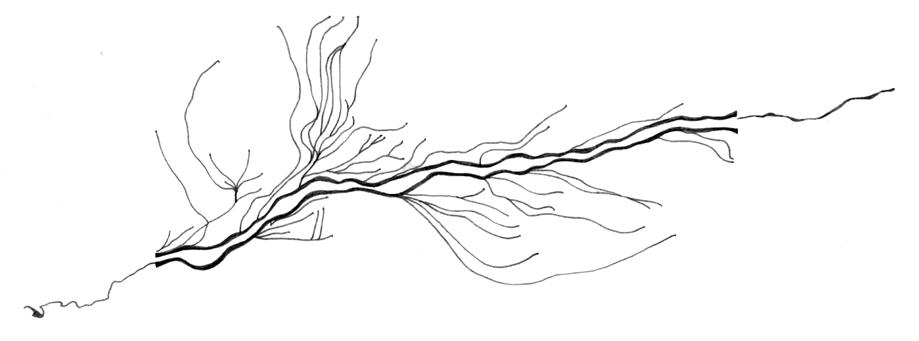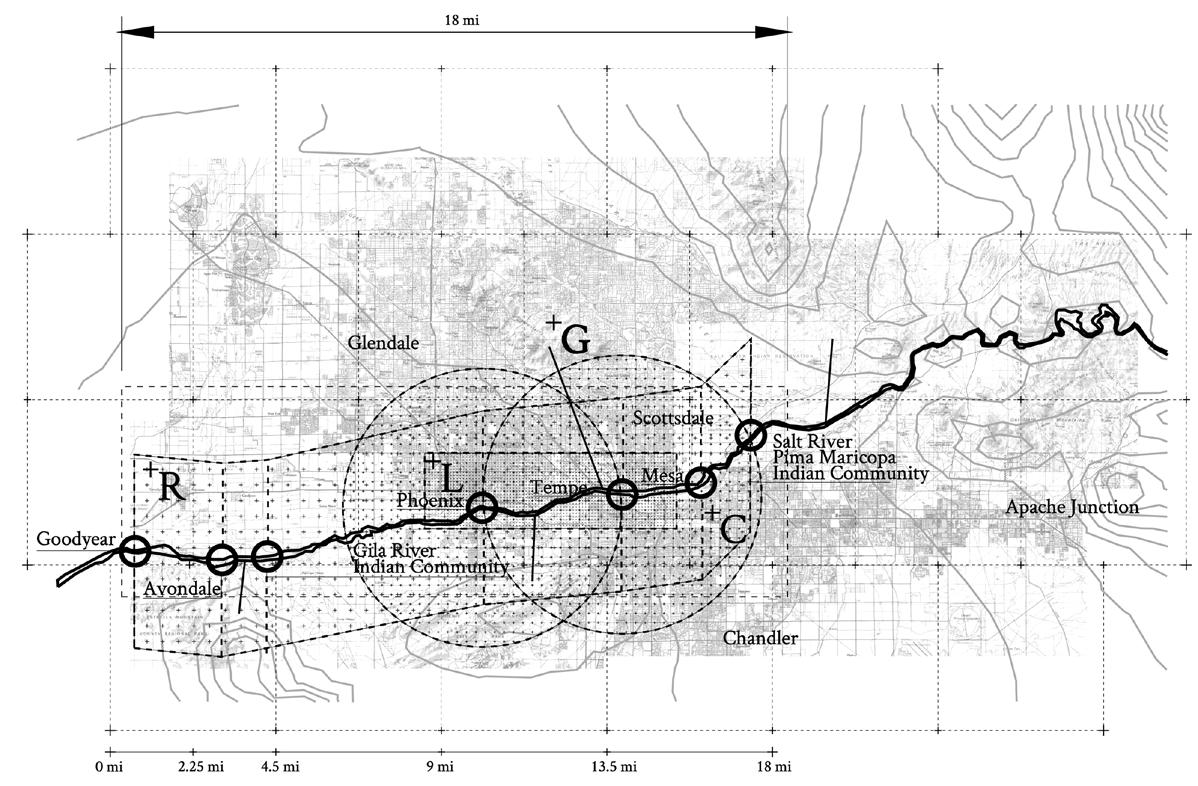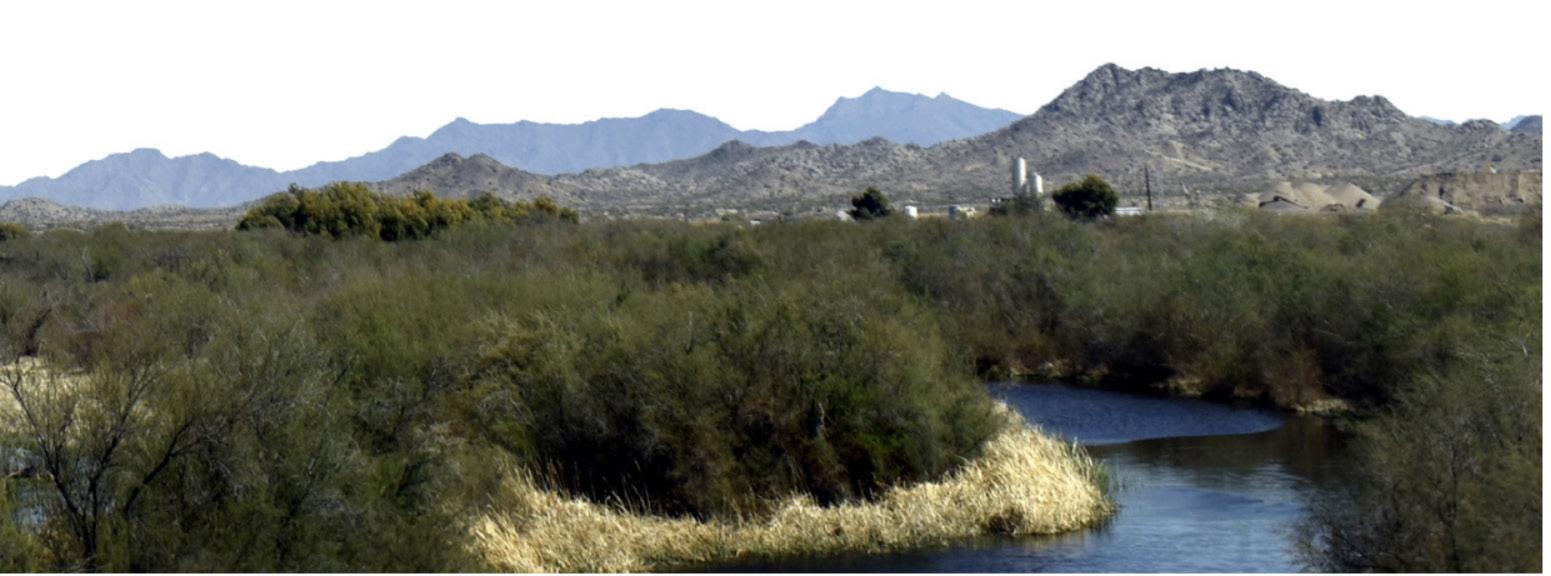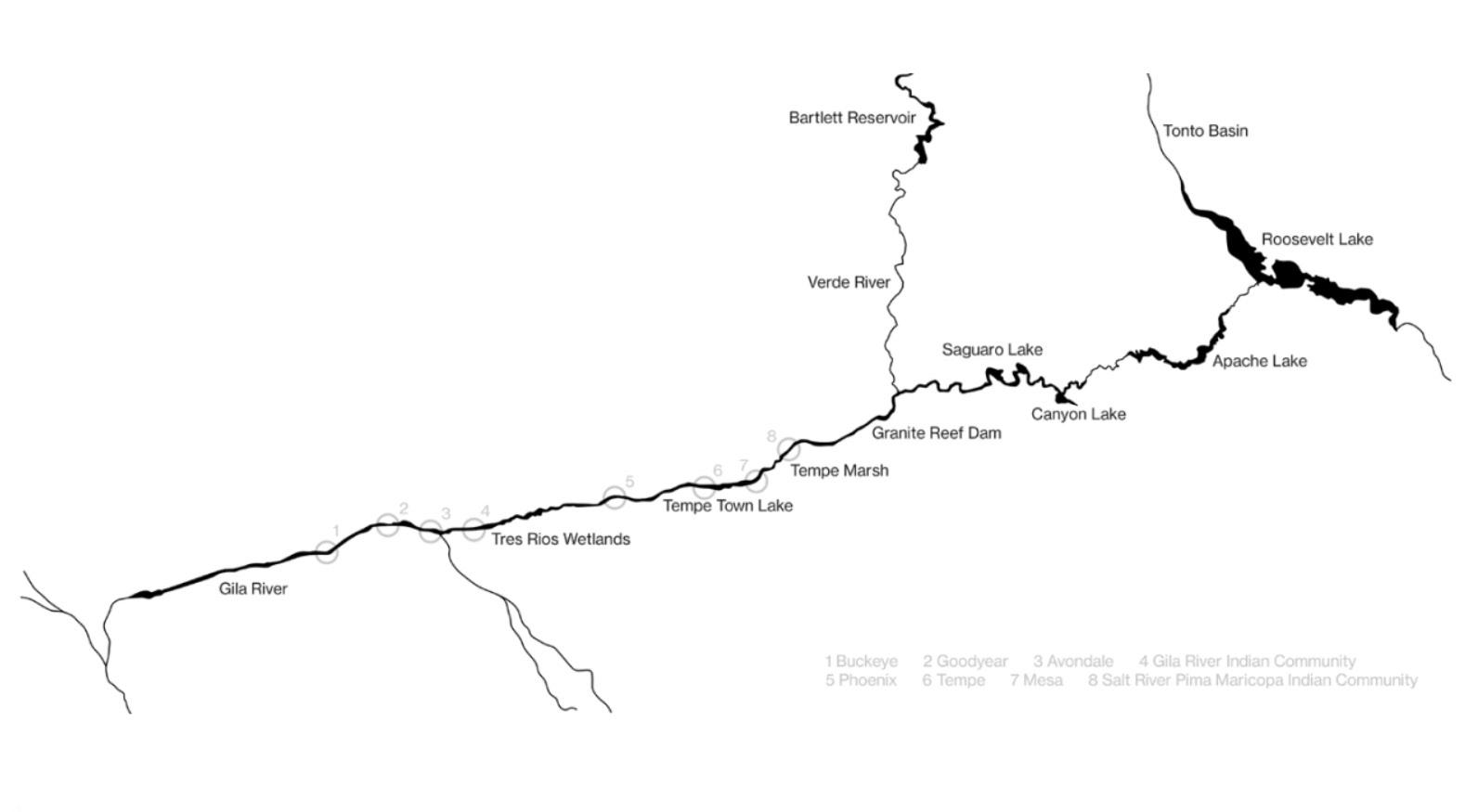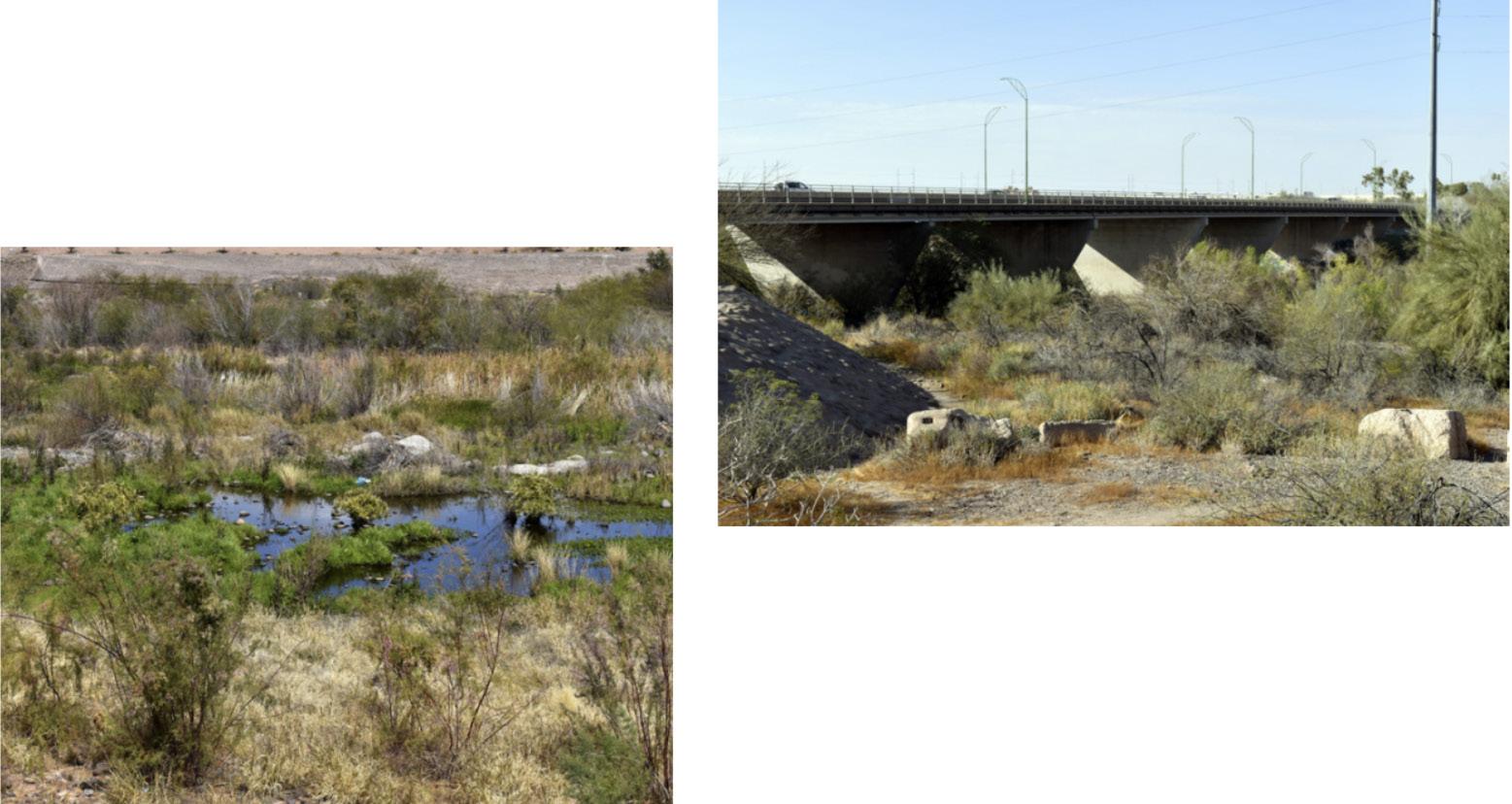
3 minute read
Erin Bascom
Erin Bascom
The Regenerative Confluence of Water
Acommunity-based methodology of healing is developed to enable the regenerative co-development of the Salt River watershed. Urban development has generally been the result of proximity to a major water source. Ancient cultures honored water for its multiplicity of values and utilized it in uncompromising ways. As a result of Western development practice, water systems have been stripped of their natural dynamic rhythms for order, consistency, and control in our increasingly demanding modern systems. What remains are the physical and historical fragments of the Salt River.
In the 1800s when settlers arrived in the Salt River valley, they named the developing Arizona territory “Phoenix” as a symbolic gesture out of recognition of the development’s emergence from the ashes of the Hohokam farming tribe. Development strategies associated with colonization and the industrialization of the 1800’s produced new infrastructure to control rivers and lakes to overcome the fluid, irregular, and sometimes damaging patterns of natural water systems. These practices permanently altered the natural water systems of central Arizona.
In recognition of the value brought to the Phoenix Metropolitan area by the Salt River, efforts must be focused on its regeneration. Before we can heal the river; however, we must first heal our relationship with the river and with each other. What once served as cultural, spiritual and physical anchor for the indigenous peoples who originally inhabited this land, may once again be re-established as an integral part of daily life.
The intent of this study is to develop a new ecocultural design model of development for the Salt River watershed and surrounding areas with renewed respect for the land in modern society. It includes both conceptual and practical community guides to facilitate and catalyze a new community-driven typology of planning prepared for rapid community change and climate challenges. This study includes the review of prominent existing projects, both regionally and globally, with expertise in the areas of urban development, culture and place keeping/making, ecology and water management. This study aims to exhibit the diverse components of urbanism and its effects on the Salt River corridor, surrounding urban ecosystems and climate. This thesis argues for simultaneous and codependent cultural and ecological growth and healing, and its necessity for sustainable urban development.
Lastly, an urban revitalization framework is manifested in a community-oriented handbook based on key findings to produce a unified vision executed by watershed community co-design of the Phoenix metropolitan area. The Salt River traverses eight counties across forty miles. While this river hardly resembles what was once the cradle for development in the Sonoran Desert, it may still hold the key to our future. This is a call to action to consider our history, our present, and your role in our trajectory.
The healing process begins with the recognition of multiple value systems. To appropriately acknowledge and incorporate this multiplicity into the regenerative road map, knowledge exchange will become co-knowledge exchange, engagement will become co-engagement, followed by cocreation, co-implementation, and finally, coopportunity. Furthermore, river timelines will be referenced as plural to similarly acknowledge their multiplicity.
